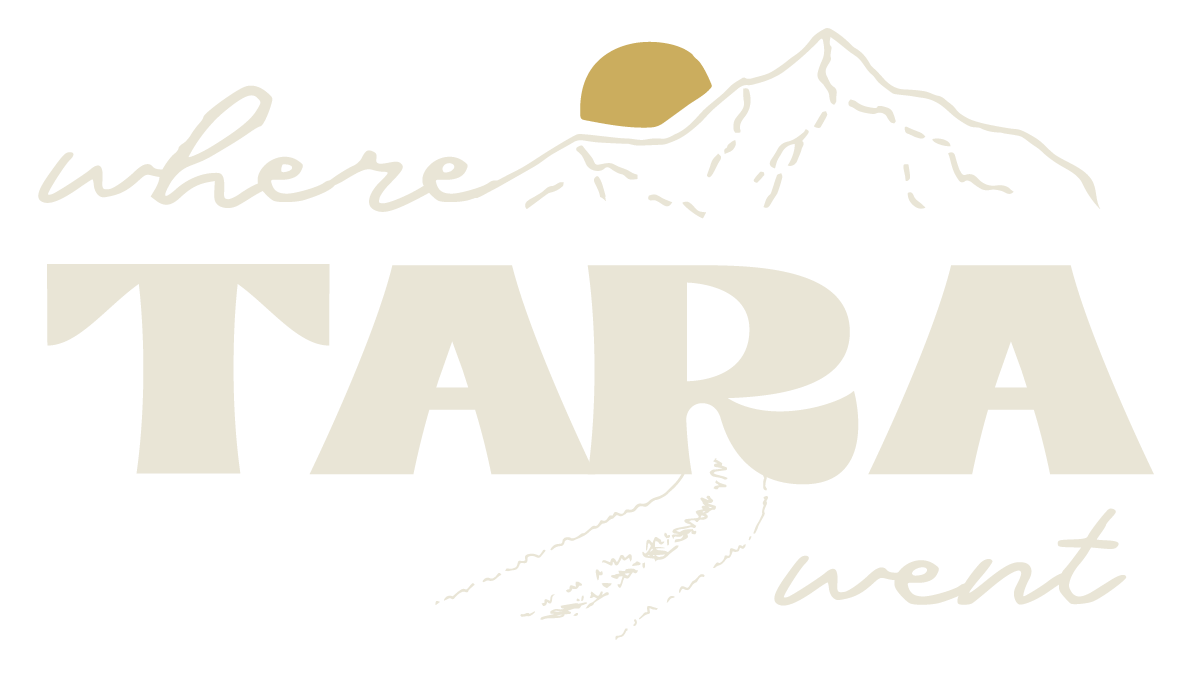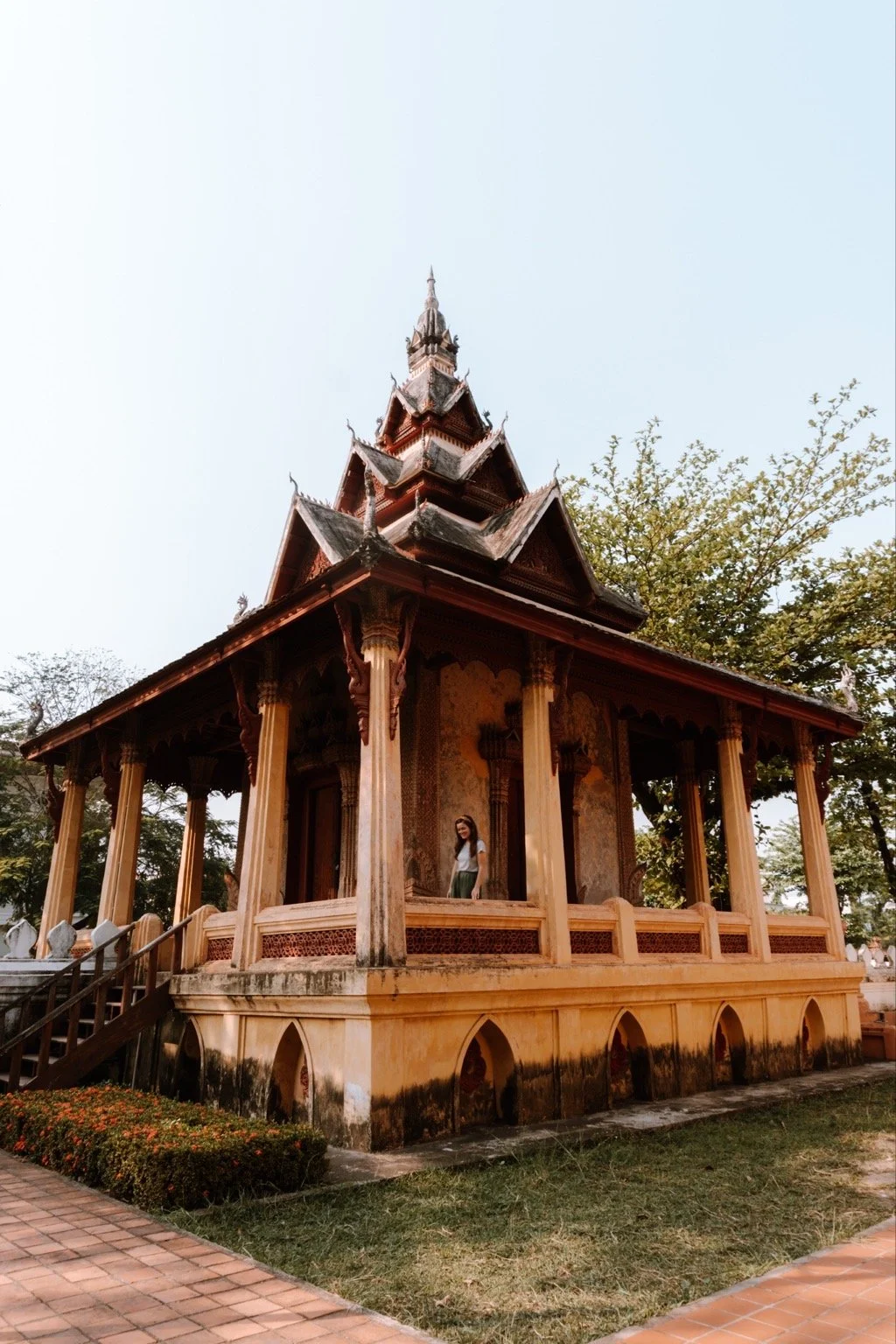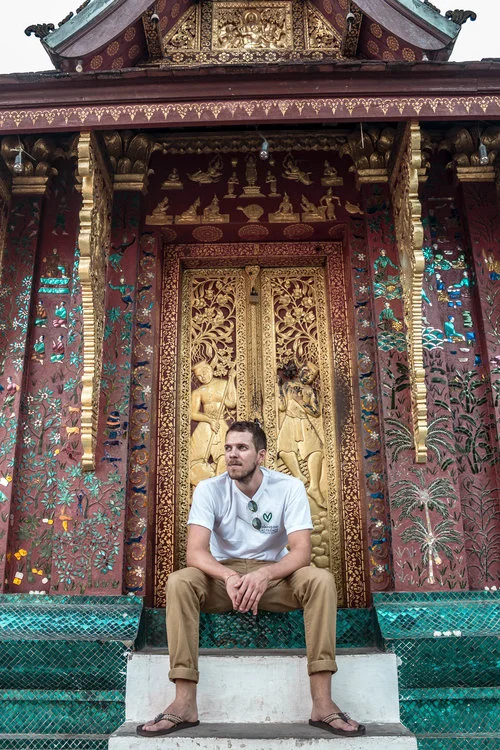renting a motorbike in Laos: questions to ask + things to consider
Read this comprehensive guide to motorbike rental in Laos before you hit the road.
Wind in your hair. Dust on your face. Sun at your back. Freedom as far as the road extends.
That’s the beauty of motorbiking in Laos. Renting one is popular with tourists, but there are considerations to be made before they hop on two wheels for a joy ride through a beautiful country like Laos.
My little black motorbike, which was stolen from the previous owner and then returned to the previous owner (I know, only in Laos), has given me a lot of freedom while I’ve been living in Laos this time around. Walking and pedal-biking is easily the best and safest way to see Luang Prabang, however, exploring the waterfalls and other natural landscapes outside of the Luang Prabang requires negotiating fa tuk-tuk or having the money to hire a driver full-time. A motorbike is, simply put, the optimal way to see the Lao countryside and all its magic on your own terms.
PLEASE NOTE: This is a post regarding motorbike rental. Owning a motorbike requires an entirely different set of procedures and paperwork. I thought it’d be best to focus on those visiting Laos wishing to hire a motorbike for the purpose of this post.
when to visit Laos ↴
Laos has two “official” seasons: wet and dry. During the wet season, you can expect rain in the mornings and overnight. During the dry season, expect dirt roads to become dustier. I always say the best time to visit Laos is any time other than its third, less official season: slash and burn, which is roughly April. During this time, farmers cut down old crops and burn them. This makes the air nearly unbreathable and the views hazy. It’s also an unbearably hot time of year.
Specifically for motorbiking, I’d recommend the dry season. Yes, it’s hotter outside, but it’s also drier and the roads are safer. There’s less likelihood of a landslide in the dry season and you want to avoid those at all costs.
motorbike licenses in Laos ↴
It is illegal to ride a motorbike without a license in Laos despite the fact that you probably won’t be asked to show proof of yours when renting. Unfortunately, a lot of tourists do ride without a license, but you need to consider that insurance will not cover damage or medical emergencies if you’re riding illegally. On the rare occasion you find yourself being asked to show proof of license, nearly all international licenses are accepted. Let’s put it this way: I’ve never hear of an instance in which a motorbike license isn’t accepted in Laos.
popular motorbike adventures in Laos ↴
Vietnam might be more well-known for its motorcycle loops, but Laos is equally as scenic and, in my opinion, its motorbike routes are a greater adventure since fewer tourists ride them. If you’re up for getting truly stuck into the thrill of Laos, here are trips to look into:
THAKHEK LOOP | an off-the-beaten-path loop in central Laos covering 220 miles (350 km), typically done in 4-days and is the most famous motorcycle loop in Laos
PAK OU LOOP | 50 miles of easy trail, perfect for first-timers
NAM PHOUN NATIONAL PARK | a partially overgrown, single-track road that’s a bit tricky, especially during the wet season due to its water crossing
PLAIN OF JARS | a megalithic archaeological landscape in Laos that consists of thousands of stone jars scattered across Xiangkhoang Plateau, usually done from Luang Prabang in 1-2 days
HILL TRIBES LOOP | a 9-day biking journey (not for the faint of heart) that starts and ends in Vientiane looping through the mountain village of Sayaboury, Ban Khop, Vieng Phouka, Na Mor, Nong Khiaw, and Luang Prabang
what to know about motorbike rental in Laos ↴
automatic vs. manual
The first item you need to consider is whether you need an automatic or manual motorbike, and what you are actually able to drive. Automatic motorbikes are easy to use, especially for the inexperienced. Manual motorbikes are a little bit more complicated and require a better understanding of motorbikes and Lao traffic awareness. Manual motorbikes are, however, more fuel-efficient, and better suited for steep Lao mountains and jungle backroads. Simply put: automatics are great for city explorations on paved roads and manuals are ideal for countrywide road trips.
For those looking to ride the entire length of Laos, there are many roads where an automatic bike just isn’t suitable. Unfortunately, most people don’t know how to drive a manual bike. Make sure you ask your rental place if they offer automatic or manual motorbikes. A majority of Lao rental companies hire both manual and automatic bikes, but it’s best to check first and don’t rent anything you are remotely uncomfortable using.
My motorbike is an automatic and it does the job just fine for the most part. If you’re a visitor passing through, I doubt you’d ever need a manual unless you had some grand plan of seriously off-roading. My automatic ride is a little bumpier when the roads are especially bad after rainfall, but I get there in one piece.
check your bike before you ride
You must check the motorbike before renting. Check the brakes, lights, indicators {blinkers}, motorbike horns, and both tires. Make note of any scratches or dents in the motorbike. My advice would be to take a video or photos in the presence of the rental bike owner so that you have physical evidence of the bike’s initial condition and won’t be charged for scratches that were already on the bike.
Some owners will fill the gas tank, but most don’t bother and leave it empty. Ask about the petrol tank policy before you head out and make sure you know where the nearest stations are along your intended route so that you don’t get stranded on the hot Lao roadside.
If you experience mechanical problems with your motorbike, do not bring it into a random bike mechanic. Call the owners or bring it back to the rental shop and they will fix it for you. If you bring it to any mechanic you come across, you will be held responsible for any damage to the motorbike or bad accessories that a mechanic might attach to it.
helmets
Most of the time helmets come with your motorbike rental, though this isn’t always the case. You may have to pay a small additional fee to rent a helmet. Regardless of any extra cost, having a helmet is essential when riding a motorbike around Laos.
I understand that me saying this is entirely hypocritical— I often ride without a helmet. I actually don’t even own a helmet, I borrow Luke’s…sometimes…when I think of it. Sorry, Mom. The point is, I know it’s bad and I know I need to wear a helmet. Maybe by posting this I’ll feel guilty enough to go get one and glue the thing to my head.
Finally, security guards watching over your bike in public parking lots or at tourist attractions will keep an eye on your bike, but most will not feel responsible for looking after your helmet or other motorbike accessories. Leave your helmet locked inside your bike seat and bring anything of value with you.
the rules are there are no rules
Okay, so yes, there actually are rules of the road. But are they followed? Not in the slightest. From the moment a person can reach the handlebars of a motorbike, they are riding that motorbike at whatever speed they like in whatever way they like— one-way roads and stop signs be damned.
As a foreign guest in any country, you should follow laws put in place regardless of whether the locals do or not. One wing mirror is required by law and any posted speed limits must be adhered to. Don’t risk jail time or heavy fines for the sake of a joy ride.
consider local medical care
This is going to sound really dark, but it’s important to think about: if something were to happen, say a crash or a collision, local medical care is limited in what services they can provide you.
Having worked at the Lao Military Hospital on behalf of the U.S. Embassy has allowed me to see firsthand the progress of medical practices here. It’s also allowed me to see firsthand that most hospitals here are not equipped to handle major surgical procedures. Luke was in a motorbike accident a few years ago, requiring major surgery on his wrist. He had to be flown from Laos to Thailand and onward to England with a shattered arm in order for him to receive the medical care required to get him back in working order. It’s quite common for people, expats and otherwise, requiring serious medical care to be flown to Bangkok. This can be costly, especially if you don’t have full medical coverage and travel insurance.
If a major accident were to occur, it would be foolish to think you could depend entirely on local healthcare services.
associated costs
The cost of renting a motorbike varies depending on your location city, the rental shop, and the duration of your hire. Rentals are typically cheaper in Vang Vieng than in Luang Prabang or Vientiane. Some places charge as low as USD $5 for daily rentals while others charge upwards of USD $50 for a day’s use. Shop around and negotiate if you can.
On top of the cost of renting a motorbike, you should also consider the cost of petrol, a helmet {potentially}, and motorbike parking. Often a deposit is required for rentals, but if you stay in a hotel and rent a motorbike from that hotel, they will often waive the deposit. Alternatively, some rental shops will ask you to leave your passport with a shop while you travel the whole country. I would never recommend leaving your passport with anyone or any company if it can be helped at all. If this is required of you, see if the rental shop will accept a different form of a valid ID or a copy of your passport instead.
A lot of major landmarks will charge you a minimal fee to guard your motorbike while you enjoy the sights, like Kuang Si for instance. This is usually not more than USD $1. The security guards will look over your bike and make sure no one touches or steals it.

































